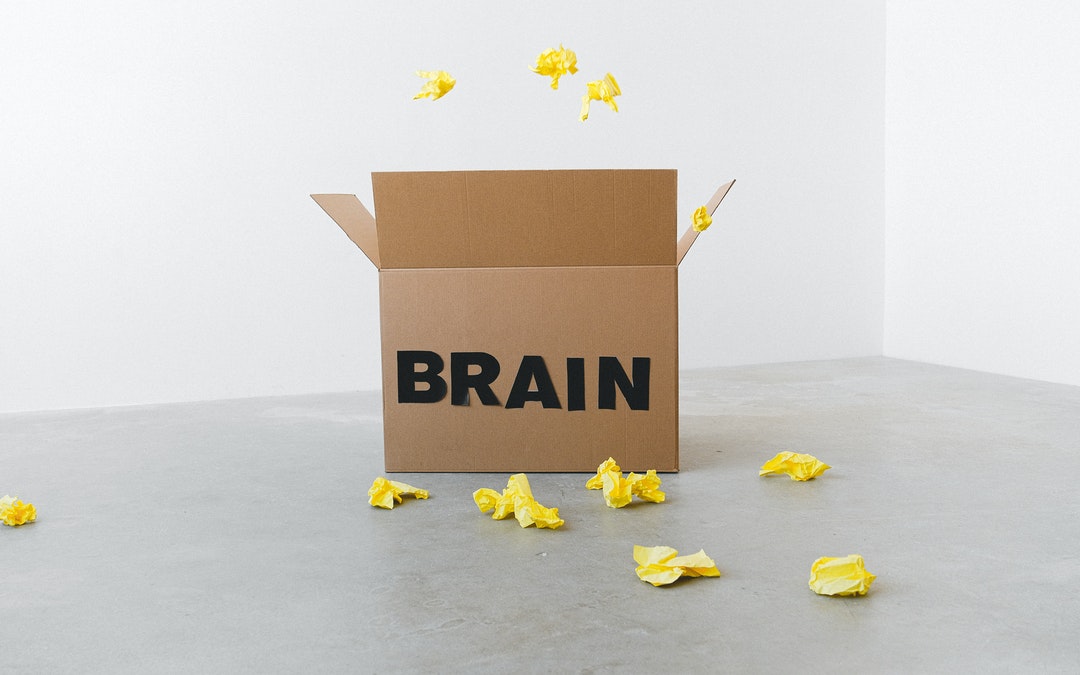Cognitive biases affect our everyday lives in a multitude of ways. A bias can lead to errors in thinking, unfair discrimination, and poor decision-making.
What exactly is a bias? A bias is simply a deviation from human rationality.
Recognizing and managing bias is crucial for becoming a fair, logical, and efficient employee and leader. By understanding your inherent strengths through tools like the HIGH5 strengths assessment, you can gain valuable insights into your thinking patterns and potential biases. This self-awareness not only enhances your reputation but also helps you make more balanced decisions, ultimately leading to better outcomes in both personal and professional spheres.
In this article, we will cover what cognitive bias is, how it manifests in our daily lives, and what to do about it.
What is Cognitive Bias?
When we rationally make decisions and think, we rely primarily on logic and our surroundings.
Errors in analytic thinking or perception of reality can lead to a distortion of facts, which causes mental mistakes and biases. At times, biases can be driven by emotions or a refusal to accept reality.
While many view their brain as fully rational and emotions as a separate component, both rational and emotional thinking occur simultaneously in our minds. Biased thinking often results when these processes become entangled. The HIGH5 strengths assessment can be a powerful tool in navigating this complexity. By identifying your unique strengths, you can better understand how your thought processes work, including potential areas where bias might creep in. This self-knowledge allows you to leverage your strengths to maintain a more balanced perspective, reducing the likelihood of biased thinking.
The brain often works to be efficient. At times, it will overlook certain key information for the sake of efficiency, which leads to hidden biases.
Biases come from numerous places. If you inaccurately recall an event or statistic, this can change the way you perceive reality.
Distortions of memories can seriously impact you in the long term. Over time, this inaccurate view can become the foundation of your thinking.
If this happens, you will be immensely susceptible to faulty thinking.
Your attention span also plays a role in bias formation. Only paying attention to certain facts or individuals can distort your sense of truth.
Cognitive bias is still a relatively new scientific concept. Amos Tversky and Daniel Kahneman first wrote about it in 1972.
While Tversky & Kahneman laid out the principles behind bias, scientists have since expanded on this idea.
They now perform research to understand bias’s role in racial relations, self-perception, leadership, eyewitness memory, and much more.
Pro Tip From HIGH5
Leverage your HIGH5 strengths to combat cognitive bias. For instance, if one of your top strengths is ‘Analytical Thinker’, use this trait to critically examine your thoughts and decisions for potential biases. Regularly challenge your assumptions and seek diverse perspectives to ensure a more balanced view.
Signs of Cognitive Bias Interactions
It’s important to recognize that everyone, regardless of their background or expertise, has some level of bias. The key to effectively managing these biases isn’t to completely eliminate them—which is virtually impossible—but to control and limit their impact. This is where understanding your strengths through assessments like the HIGH5 test becomes invaluable. By identifying your unique strengths, you gain a powerful tool for recognizing how your biases might manifest in everyday decisions. For instance, someone with a strength in ‘Strategist’ might be better equipped to spot and counteract confirmation bias. Understanding the interplay between your strengths and potential biases allows you to make more balanced, informed decisions in both personal and professional contexts.
List of Most Common Cognitive Bias Signs
A few common ways bias can be seen includes:
- Listening to shows and reading books that already uphold your opinions (confirmation bias)
- Refusing to acknowledge your flaws may have led to a negative outcome (self-serving bias)
- Blaming others for most issues that occur in your life (having a scapegoat)
- Devaluing others’ success by stating it was all due to luck. When it comes to your successes, attributing them to your skill and hard work
- Believing that you are vastly more intelligent than your peers/thinking you know mostly everything (the Dunning-Krueger effect)
- Believing that everyone has the same value system or beliefs as you
- Favoring spending your time or hiring individuals who are in the same “group” as you. This can be racial, sexual, gender-related, nationality, and so on (in-group bias)
- Believing the first idea or memory that comes to mind is the most accurate, ignoring other solutions. This is known as availability bias or the availability heuristic
- Thinking you can accurately predict most events even without much information (hindsight bias)
- Relying too heavily on the first article, journal, or source you find to base your opinions around (anchoring bias)
- Continually underestimating the dangers and downsides to upholding the status quo while thinking all change is negative
- Letting your impression of one person influence how you view a larger group of people. This could be in an organization, race, country, and so on (halo effect)
Pro Tip From HIGH5
Use your identified HIGH5 strengths as a lens to examine your decision-making process. If ‘Empathy’ is one of your top strengths, consciously use it to consider multiple perspectives before making important decisions, thereby reducing the impact of biases like the false consensus effect.
12 Examples of Most Common Cognitive Biases
While everyone aspires to think rationally and avoid common biases, achieving this goal requires more than just willpower—it demands self-awareness and strategic action. This is where tools like the HIGH5 strengths assessment prove invaluable. By identifying your unique strengths, you can better understand your cognitive tendencies and potential biases. For instance, if you discover that ‘Analyst’ is one of your top strengths, you might be less susceptible to emotional biases but more prone to overlooking important contextual factors.
Armed with this knowledge, you can concentrate your energy on addressing your most prominent biases first, using your strengths as powerful allies in this process. The HIGH5 assessment not only helps you recognize your biases but also provides you with the tools to leverage your strengths in overcoming them
Below, we have compiled a list of the most prevalent biases with real-world examples of them.
Actor-observer bias
It can sometimes be difficult to admit your flaws or bad behavior, leading to a poor outcome. However, this can be beneficial in the long run.
Those with actor-observer bias tend to overlook this. Instead, they believe any of their negative outcomes are a result of outside forces.
When it comes to others, though, they tend to blame the individual and their behavior.
Example of Actor-observer bias
An obese man sees an overweight coworker. He thinks to himself that this other man’s weight comes from unhealthy eating and lack of exercise.
After all, he notices the man eats a full pizza each day during lunch.
When asked why the obese man is so overweight, he attributes this to hormones and genetics, not factors he can control.
Anchoring bias
The anchoring bias encourages people to trust and use the first source they find. Then, all of the opinions you have in this topic will stem from the first source.
The main issue with this bias is the lack of research and often blind trust of sources.
Even if the source seems credible, it is most rational to seek a differing opinion and compare the two.
Comparing sources rarely occurs with someone who has anchoring bias, as they view it as time-wasting and inefficient.
Example of Anchoring bias
You notice that a shirt on eBay costs $50. Without looking at the MSRP or sales record for the shirt, you automatically decide it is a good deal and buy it.
You also do not research current competitors that sell the same shirt. If you did, you would have noticed a different vendor sells the shirt for $30.
If you would have seen this second option, you would have likely seen it as cheap or low quality.
Attentional bias
It is natural to pay more attention to your friends, coworkers, and bosses than it is to complete strangers. The more you know someone, the more you trust them.
However, attentional bias takes this notion to the extreme.
Those with this bias only listen to a select group of individuals while actively ignoring the voices of others, regardless of the topic.
Attentional bias can also force you to overlook certain materials and focus only on a select few.
Example of Attentional bias
While touring a home, you notice that the kitchen is gorgeous. It has absolutely everything you could have wanted; a true dream kitchen.
As you walk through the rest of the house, all you can think about is the great kitchen. You do not pay attention to the crumbling walls or squeaking floors.
Availability heuristic
Similar to those with anchoring bias, this bias places emphasis on efficiency.
The first idea or belief that comes to your mind is automatically judged as legitimate, fair, and reasonable.
You do not spend much time understanding other ideas or conducting research.
Example of Availability heuristic bias
At one point, you read an article about a plane crash that killed numerous people. Now, you are deciding whether to book a flight or drive to the location.
While flying is more efficient, and you would have to rent a car to drive, you still decide to take the car.
The idea of dying in the plane is too frightening to you, even though you are statistically more likely to perish in a car crash.
Confirmation bias
Confirmation bias is one of the most common types of biases. It is where you seek out actual confirmation for your opinion only to uphold an existing belief.
Being open-minded and trying to understand the opposing side is uncommon for those with this bias.
Examples of Confirmation bias
When seeking out a news source, you search up “left-wing news channels” on the web. This is opposed to seeking an unbiased (or mostly unbiased) news channel.
You also never watch the other side’s opinion shows, listen to their arguments, or try to understand their position.
False Consensus Effect
This is when you overestimate how many people agree with you on a topic.
Usually, individuals utilize this bias to make an argument seem stronger or make them seem more intelligent.
If more people agree with them, it is likely that others will agree with them as well. After all, they do not want to be rejected by this large group.
False Consensus Effect Example
You are speaking to a friend on the topic of cigarette smoking vs. vaping.
You tell your friend that the vast majority of scientists agree with you on the idea that smoking is better than vaping.
In reality, this is not true: scientists are still not sure whether vaping is as healthy or healthier as vaping.
Functional Fixedness
Do you ever wonder if you can use a product in more than one way? If you do, you likely do not have the functional fixedness bias.
With this bias, individuals believe there is only one way to use an item.
They are not interested in finding new ways to apply the item and dislike out-of-the-box/creative ways to use the item.
Example of Functional Fixedness
When you see a coin, you believe that it is only legitimately used in currency. There is no way to apply the coin to solve other problems.
However, this coin can be used to solve a problem around the house. With functional fixedness, you cannot apply the coin to solve any problem other than currency.
Halo Effect
First impressions are crucial to those who maintain the halo effect bias.
When you first see an individual, you let that first impression dictate how you view them for a long period of time.
Their clothing, initial mannerisms, and so on are all seen as additional characteristics.
If the individual is attractive, you are more likely to attribute moral and positive attributes to them.
Halo Effect Example
A new, young female coworker enters your organization. You find her attractive and immediately start thinking she is a great addition to the team.
In reality, she is an intern who does not know much about the industry. She also possesses a few negative qualities, which you overlook due to her positive first impression.
Misinformation Effect
The misinformation effect interferes with one’s memory. After a certain event occurs, the outcomes influence how you remember the initial event.
You may have a difficult time creating timelines if you have this bias. Your memory can be influenced by what others tell you about the event.
This is one reason why eyewitness testimony is no longer the pinnacle of evidence in trials.
Misinformation Effect Example
You get invited to a large party. While there, you have an incredible time. Everything goes very smoothly; you speak to long-lost friends and eat great food.
A few weeks after the party, you read social media posts that talk about how boring the party was.
This leads you to forget the fun you had and start remembering the party as dull.
Optimism Bias
Optimism is generally seen as a positive attribute. However, this bias leads you to have altered perceptions of positivity and reality.
If you have an optimism bias, you believe that you are unlikely to suffer from misfortunes. This can make you unprepared when forced into negative situations.
You also believe that you are more likely to be successful when compared to your peers, this breeding arrogance.
Example of Optimism bias
You and a small group of friends have been interested in coding since you were teenagers. All of your work in the same company.
While empirically, your skills are about equal, you still believe you are more likely to achieve success than your peers.
Self-Serving Bias
The self-serving bias gives individuals the tendency to attribute all positive outcomes in their life to their own talent and hard work.
Typically, this results in the individuals possessing a distorted view of their own abilities.
When something negative occurs in their life, they blame external forces (ones they cannot control). It is common for such individuals to have scapegoats, too.
Example of Self-Serving bias
You recently got promoted to a managerial position. You have been great friends with the owner, and your parents even helped him pay off some of his college debt.
You overlook this connection and instead say your hard work lead to this raise.
When it comes to your slow project completion, you blame it on a coworker’s loud speaking in the room next to yours.
The Dunning-Krueger Effect
The Dunning-Krueger effect makes it easy for an individual to overestimate their abilities and positive outcome knowledge.
They may view themselves as smarter, faster, more rational, better leaders, etc., than they truly are (based on empirical evidence).
The Dunning-Krueger Effect Example
You have recently started reading about economics. After s few days, you start to believe you are an expert on macroeconomics.
When confronted by conflicting views from an actual economist, you berate them and dismiss their points.
Pro Tip From HIGH5
Create a personal ‘bias check’ system based on your identified HIGH5 strengths. For example, if ‘Brainstormer’ is one of your top strengths, use it to brainstorm multiple interpretations of a situation before making a judgment, helping to counteract biases like the fundamental attribution error.
What are the Causes of Cognitive Biases?
Cognitive bias can stem from numerous causes. It depends highly on how you were raised, who you encountered, and your personality type.
Most people have some form of cognitive bias, but they fail to acknowledge this.
For many people, cognitive biases help them with associative information processing in a more efficient and black-and-white manner, even if it is inaccurate.
Cognitive biases can also stem from issues with self-perception.
Those that were previously very insecure can find themselves far more confident if they utilize the Dunning-Krueger effect in their thinking, for example.
Quick thinking strategies, known as heuristics, are often probable causes. These shortcuts can sometimes help you process information quickly, but they also leave lots of room for errors.
Many other factors are at play, as this is an intricate and complicated thinking system.
The environment, social pressures, one’s goals, and emotional state are all contributing factors. Plus, one’s age can influence how open-minded they are.
Positive & Negative Impact of Cognitive Bias
Even though cognitive biases are often viewed in a negative way, there are still some benefits to them.
Ultimately, it is up to you to decide whether these benefits outweigh the negatives of bias.
Below, we have compiled a shortlist of both the pros and cons of cognitive bias.
Benefits of Cognitive Bias
- Quickly make decisions and process information
- Avoid life-threatening outcomes by acting on impulse and with reaction speed
- Develop a stronger bond with the individuals in your group
- Encourage candidates to immediately make a strong first impression
- Allows you to boost your confidence and overcome self-doubt
- Encourages you to become more reliant on your own opinion and helps you stand your ground
- Reduces the time you spend on superfluous activities
- Allows you to get to know your inner thoughts more and decreases the likelihood of being influenced by others
- If your bias leads you to think similarly as to someone else, you can avoid quarrels with them
- Avoid frustration from listening to two views on each issue
Negative Impact of Cognitive Bias
- Greater susceptibility to conspiracy theories and distorted thinking
- Lead to racial, sexual, national, and other prejudice
- Can cause you to think impulsively and irrationally
- Often, you will be seen in a negative light by your coworkers and friends (hurts your relationships)
- Damages how reliable your memory is and can cause others to doubt your accounts/recollections
- Increases the chances of you becoming isolated, depressed, or anxious as a result of certain beliefs
- Decreases your chances of career success and negatively impacts how you are viewed as a leader
- In crisis situations, you may respond quite poorly (due to lack of development of critical thinking skills and overreliance on impulses)
- Limits your ability to be creative and problem-solve effectively
- Can hamper your attention span
How to Overcome Cognitive Bias
If you determined that the cons of bias outweigh the pros, the next step to dealing with bias is to become aware of it.
Some researchers believe that forms of cognitive training can contribute to your awareness and help you tackle bias. Thus, it is partially in your control.
When it comes to being aware of bias, understanding bias is not a personal flaw. Do not blame yourself for having bias.
Instead, remove morality from the equation and simply focus on identifying bias. Before you find your own bias, research the types of biases.
Then, see how they can apply to you. This article is a good place to start! Researchers believe that bias awareness can lead to a 29% reduction in the effects of bias.
Then, try to understand what led you to be biased in the first place.
Was it your upbringing? Were you not exposed to other opinions or individuals? Did it come from an emotional reaction or a need to appeal to someone? Consider which personality traits could contribute.
Finally, you must start challenging your bias.
If you notice that your tendency is to ignore information, actively seek out more information than you think is necessary.
Listen to individuals who have opinions that differ from your own. Practice strategies that help you stay in control of your emotions.
All of these strategies can help you combat bias. Try to think through your biases, acknowledge their flaws, and find another way to approach the situation.
Pro Tip From HIGH5
Develop a ‘strength-based bias-busting’ routine. Regularly reflect on how you can use each of your top five HIGH5 strengths to combat different cognitive biases. For example, if ‘Philomath’ is a top strength, use it to actively seek out information that challenges your existing beliefs, helping to mitigate confirmation bias.
Bonus: Cognitive Bias Vs. Cognitive Dissonance
These two terms sound similar, but their roots and definitions are quite different.
They are both related to cognition, specifically flaws in cognition, but a few key differences separate them.
Cognitive biases limit the information you accept. They may distort the way you perceive reality, too.
On the other hand, cognitive dissonance does not necessarily limit the type of information you register or remember.
Instead, it causes a feeling of discomfort. This discomfort arises from the conflict between information: when new information contradicts information you held as true, you feel uncomfortable.
Cognitive dissonance leads to individuals preferring their long-held beliefs, sometimes because of an emotional attachment to them.
Your brain does not like inconsistencies, and dissonance is one way to get rid of them. A bias would likely prevent you from ever seeing or remembering the conflicting information.
Frequently Asked Questions About Cognitive Bias
How do I identify my bias?
To identify your bias, you must first become familiar with the types of biases.
Research the different subcategories and try to think about which are most similar to the biases you exhibit. Think about the personality traits that contribute to your bias.
For instance, arrogance is most closely associated with the Dunning-Krueger effect.
What are my cultural biases?
Cultural biases are biases that stem from cultural beliefs.
Usually, these beliefs are tied to how you perceive others who are not members of your group as well as how you perceive work, efficiency, and so on.
Think about the lessons your parents taught you as a child to notice your cultural biases.
If they taught you to always perform traditional jobs, you may have a functional fixedness bias, as you do not like to deviate from the mainstream.
If your parents tended to isolate you from other groups, you may be biased against those groups.
What is the effect of bias in your life as a person?
Bias has a plethora of effects in your life, whether or not you notice them. For instance, the way others perceive you are influenced by the biases you maintain.
If you are always arrogant and claim to be an expert (Dunning-Krueger), you may not make connections with others easily. Your reputation can be harmed by having confirmation bias.
If you never compare prices and always choose the first option you see, your wallet may suffer.
Finally, blaming your flaws on external factors will make it more difficult for you to stay motivated, own jobs to your mistakes, and achieve your goals.








